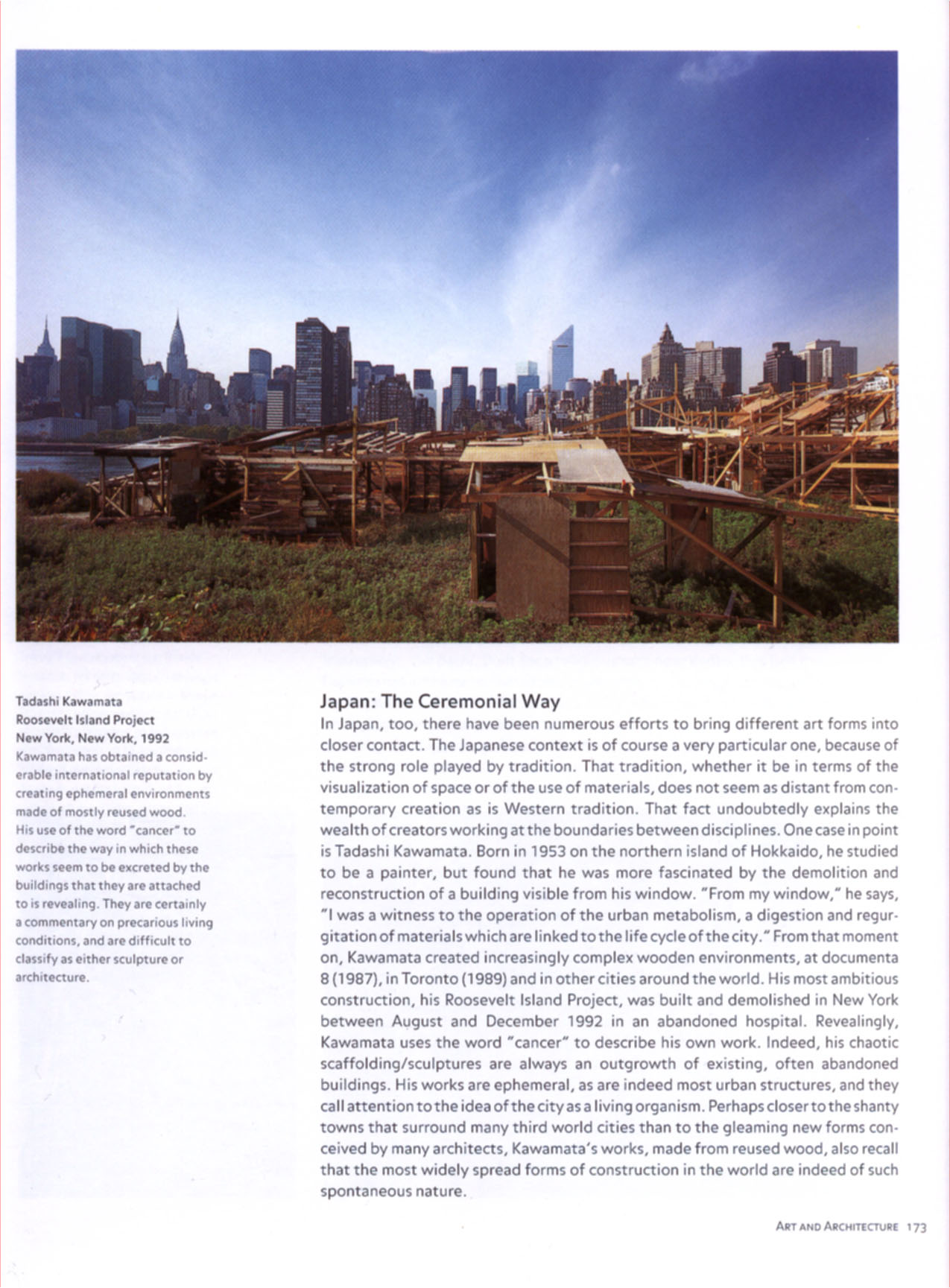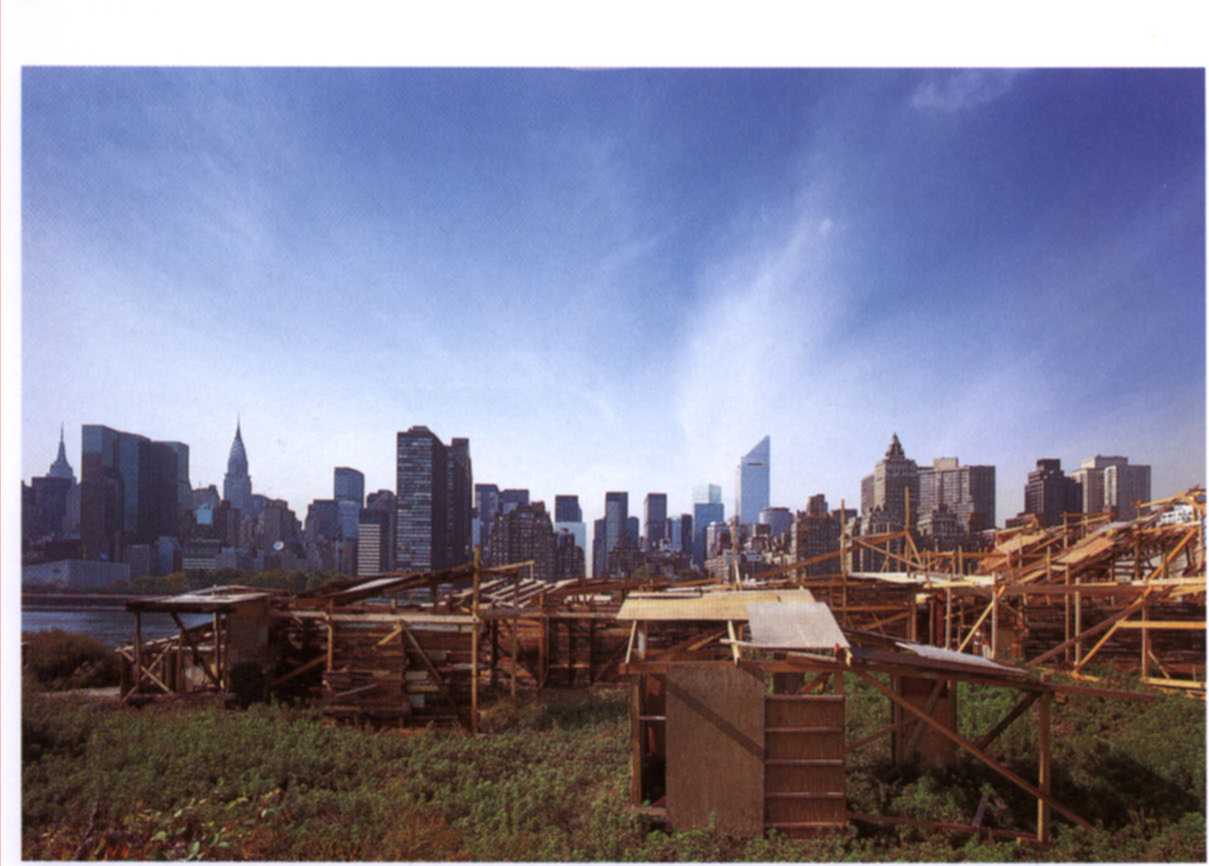New Forms Taschen 163


Tadashi Kawamata Roosovelt Island Project New York, New York, 1992 Kawamata has obtained a consid-crable International reputation by creating ephemeral environments madę of mostly reused wood Hi* use of the word 'cancer' to describe the way in which these works seem to be excreted by the buildings that they are attached to i* revealing. They are certainly a commentary on precariou* hving condition*. and are difficult to classify a* either sculpture or architecture.
Japan: The Ceremoniał Way
In Japan, too, there have been numerous efforts to bring different art forms into doser contaa. The Japanese context is of course a very particular one, because of the strong role played by tradition. That tradition, whether it be in terms of the visualization of space or of the use of materials, does not seem as distant from con-temporary creation as is Western tradition. That fact undoubtedly explains the wealth of creators working at the boundaries between disciplines. One case in point is Tadashi Kawamata. Born in 1953 on the northern island of Hokkaido, he studied to be a painter, but found that he was morę fascinated by the demolition and reconstruction of a building visible from his window. 'From my window." he says, "I was a witness to the operation of the urban metabolism, a digestion and regur-gitation of materials which are linked to the life cycle of the city.' From that moment on, Kawamata created increasingly complex wooden environments, at documenta 8(1987), in Toronto (1989) and inothercitiesaround theworld. His most ambitious construction, his Roosevelt Island Project, was built and demolished in New York between August and December 1992 in an abandoned hospital. Revealingly, Kawamata uses the word 'cancer" to describe his own work. Indeed, his chaotic scaffolding/sculptures are always an outgrowth of existing, often abandoned buildings. His works are ephemeral, as are indeed most urban structures, and they cali attention to the idea of the city as a living organism. Perhaps doser to the shanty towns that surround many third world cities than to the gleaming new forms eon-ceived by many architects, Kawamata's works, madę from reused wood, also recall that the most widely spread forms of construction in the world are indeed of such spontaneous naturę.
Art ano Arcmitccturi 173
Wyszukiwarka
Podobne podstrony:
New Forms Taschen 164 Although Kawamata vigorously rejects any relationship between his use of wood
88110 New Forms Taschen 041 Pages44/45 Itsuko Hasegawa Sumida Culture Factory Tokyo, Japan
46950 New Forms Taschen 215 BiographiesTadao Ando Boro mOukJ m 1941, Tadao Ando wat seif educated at
47870 New Forms Taschen 214 Notes 1 Wigloy, Mark, in: Deconstruc-twist Architectur
więcej podobnych podstron